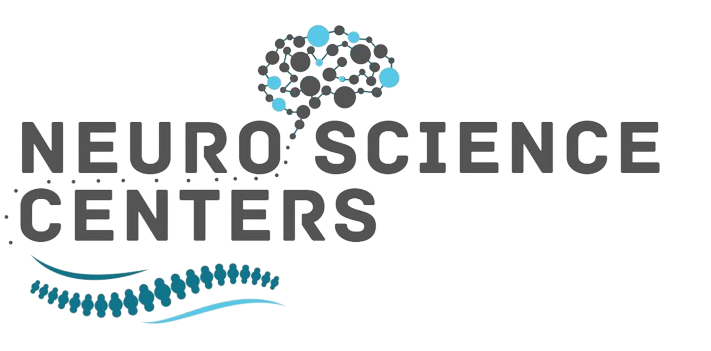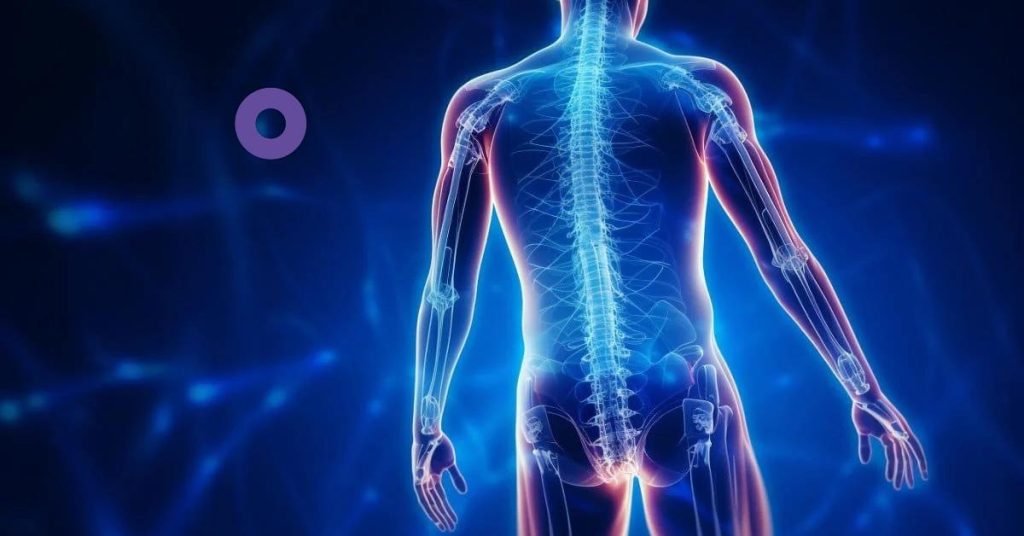Diabetic Neuropathy, a common and often debilitating complication of diabetes, affects millions worldwide, presenting a significant challenge in pain management. In the quest to find effective and lasting relief, Spinal Cord Stimulation (SCS) has emerged as a beacon of hope. This blog post aims to explore the innovative role of Spinal Cord Stimulation in managing the complex and often persistent pain associated with Diabetic Neuropathy.
Overview of Diabetic Neuropathy
Diabetic Neuropathy is a type of neuropathic pain disorder that results from nerve damage caused by diabetes. It can be associated with symptoms such as burning sensations, tingling, numbness, and sharp shooting pain that radiates through the extremities. The underlying causes of this disorder can include prolonged high blood sugar levels, poor circulation, and nerve damage due to metabolic disorders. In order to diagnose this condition, medical professionals may use a combination of physical examinations, blood tests, imaging tests, and nerve conduction studies. Treatment strategies vary depending on the severity of the condition and may include lifestyle modifications, medications, and physical therapy.
Symptoms of Diabetic Neuropathy
Moving on to the next topic of discussion, let’s delve into the Symptoms of Diabetic Neuropathy. Diabetic neuropathy is a type of nerve damage that occurs as a result of high blood sugar levels. It typically affects the nerves in the feet, legs, or hands, and may cause tingling, numbness, or burning sensations. It can also cause chronic pain, and in some cases, can cause paralysis and mobility issues. Other symptoms include muscle weakness, decreased sensation, and changes in blood pressure. While the symptomology of diabetic neuropathy can vary greatly from person to person, it is important to note that early detection and treatment can greatly reduce the risk of developing severe complications.
Causes of Diabetic Neuropathy
Diabetic Neuropathy is a type of neuropathy caused by damage to the peripheral nervous system due to complications from diabetes. It is characterized by nerve damage in the hands and feet, which can lead to a range of symptoms including pain, numbness, and tingling. In some cases, it can also cause weakness and difficulty walking. The exact cause of diabetic neuropathy is not known, but it is likely related to high blood sugar levels. High levels of glucose in the bloodstream can damage the blood vessels and nerves, leading to symptoms of diabetic neuropathy. Other factors such as smoking, high cholesterol, obesity, and lack of physical activity may also contribute to the development of diabetic neuropathy.
Diagnosis of Diabetic Neuropathy
The diagnosis of Diabetic Neuropathy is typically conducted by a neurologist with expertise in Pain Management and Neuropathic Pain Disorders. The neurologist evaluates the patient through detailed medical history and physical examination in order to rule out other potential conditions such as Trigeminal Neuralgia. Following the evaluation, they may order specific tests to confirm the diagnosis, such as nerve conduction studies, electromyography, or laboratory tests.
California-based neurology Centers specialize in providing personalized treatment strategies for Diabetic Neuropathy, as well as other Chronic Pain and Neurological Procedures. The centers are well-equipped with advanced facilities and experienced staff, offering comprehensive services in neurology and pain management, including innovative treatments like Spinal Cord Stimulation.
Spinal Cord Stimulation for Diabetic Neuropathy
Spinal Cord Stimulation (SCS) is a cutting-edge neurological procedure for managing chronic pain, including neuropathic pain disorders such as trigeminal neuralgia and diabetic neuropathy. This procedure involves the implantation of a device into the body to send electrical pulses to the spinal cord that block the sensation of pain. California-based neurology centers offer SCS treatments, with personalized treatment strategies for each patient.
The benefits of SCS for diabetic neuropathy include improved mobility, increased mental clarity, decreased pain, and improved quality of life.
How Spinal Cord Stimulation Works
Building on the previous section regarding the impact of diabetic neuropathy, spinal cord stimulation is a treatment option for those who suffer from chronic pain due to neuropathy or other neurological disorders, such as trigeminal neuralgia. Developed by California-based neurology centers, spinal cord stimulation is a minimally invasive, safe, and effective way to manage chronic pain.
Spinal cord stimulation entails the insertion of thin, flexible electrodes into the epidural space of the spinal canal. The electrodes stimulate nerve fibers near the spine, providing a tingling sensation that helps to decrease the pain signals that travel to the brain. The procedure is typically performed using sedation and local pain-relieving medicines.
Benefits of Spinal Cord Stimulation
Spinal cord stimulation (SCS) is a type of neurological procedure used to provide relief from chronic pain, including conditions like trigeminal neuralgia and diabetic neuropathy. This type of treatment involves the implantation of a small device in the lower back, which sends electrical signals to the spinal cord to block pain signals from reaching the brain. SCS has been found to be highly effective in treating neuropathic pain, with many patients reporting significant reductions in pain levels.
The benefits of spinal cord stimulation for diabetic neuropathy are numerous. SCS can provide long-term relief from neuropathic pain while avoiding the side effects associated with many pain medications. It also offers an alternative to more invasive treatments such as surgery.
Potential Side Effects of Spinal Cord Stimulation for Diabetic Neuropathy
While Spinal Cord Stimulation has been found to be a viable treatment for many neuropathic pain disorders, such as trigeminal neuralgia and diabetic neuropathy, it is important to understand the potential side effects of this neurological procedure. These side effects can vary based on the patient’s individual health and other factors and should be weighed carefully with the help of a California-based neurology center that specializes in pain management and personalized treatment strategies.
The side effects of spinal cord stimulation involve the body’s reaction to the electrical signals used in this neurological procedure. These may include nausea, headaches, or dizziness.
Types of Spinal Cord Stimulation Devices
Spinal cord stimulation is a type of neurology procedure used to manage and alleviate neuropathic pain disorders, such as trigeminal neuralgia and diabetic neuropathy. This form of pain management is utilized in California-based neurology centers, where personalized treatment strategies are developed to best combat chronic pain. Implantable systems, transcutaneous electrical nerve stimulation devices, and burst spinal cord stimulation are the three main types of spinal cord stimulation devices. Implantable systems are surgically placed, sending electrical pulses to the spinal cord via leads.
Implanted Systems
Spinal cord stimulation technology has advanced significantly to become an effective tool for managing chronic pain. Implanted systems are designed to alleviate pain that has not responded to more traditional treatments, such as medications or neurological procedures, and are commonly used to treat conditions like trigeminal neuralgia and diabetic neuropathy. These systems are implanted directly into the nervous system and provide a personalized treatment strategy for each patient.
California-based neurology centers offer the latest in spinal cord stimulation technology. Their highly skilled and experienced teams specialize in pain management and neurology and utilize advanced technologies to provide superior care. They offer comprehensive services, such as evaluation, implantation, and follow-up management of the device, to ensure optimal results.
Transcutaneous Electrical Nerve Stimulation Devices
Having discussed the potential benefits of spinal cord stimulation for treating diabetic neuropathy, it is important to understand the types of spinal cord stimulation devices available. One such device is the transcutaneous electrical nerve stimulation (TENS) device. TENS is a non-invasive, battery-operated device used to treat chronic pain, trigeminal neuralgia, and other neuropathic pain disorders. It works by sending electrical signals through electrodes placed on the skin to stimulate nerve fibers and reduce pain.
The TENS device is easy to use and provides a personalized treatment strategy that can be tailored to the patient’s needs. It is also portable and can be used in the comfort of the patient’s home or during activities.
Burst Spinal Cord Stimulation
Spinal Cord Stimulation (SCS) has proven to be a reliable and effective treatment for various neuropathic pain disorders, such as trigeminal neuralgia, diabetic neuropathy, and chronic pain. One of the main types of SCS is Burst Spinal Cord Stimulation (Burst SCS), which is a new and advanced form of SCS. It is a relatively new treatment strategy that is currently being used at California-based Neurology Centers.
Burst SCS is an implanted system that has been designed to deliver intermittent bursts of electrical stimulation to the spinal cord. This form of stimulation helps to reduce the sensation of pain, and it is much more efficient than traditional forms of SCS.
Treatment Process
When it comes to treatment process, a patient evaluation is an essential step in understanding the best course of action for their health. Neurology, Pain Management, Neuropathic Pain Disorders, Trigeminal Neuralgia, Diabetic Neuropathy, and Chronic Pain are all possible sources of discomfort and can all be treated with the help of a Neurological Procedure such as Spinal Cord Stimulation. California-Based Neurology Centers offer the latest treatment strategies and personalized treatments to ensure the best possible outcomes.
Patient Evaluation
The first step in the treatment process is the patient evaluation. At the Neuro Sciences Centers, patients undergo a comprehensive evaluation by neurology specialists to accurately diagnose their condition. Through sophisticated neurological testing, including a neurological exam, imaging, nerve conduction studies, and pain questionnaires, the specialists are able to identify the source of the patient’s pain and develop personalized treatment strategies.
The specialist will also discuss any previous treatments or therapies that the patient has tried. Common conditions evaluated include trigeminal neuralgia, diabetic neuropathy, and other neuropathic pain disorders. The specialist will assess the patient’s medical history, symptoms, and pain level to determine the best course of action for their individual needs.
Trial Period
The trial period of spinal cord stimulation is a crucial step in the treatment process. In order to ensure that the patient will receive the best possible outcome, the neurologists at Neuro Sciences Centers will evaluate the patient’s medical history, current symptoms, and neurological condition. Depending on the individual’s diagnosis, such as trigeminal neuralgia, diabetic neuropathy, or chronic pain, the neurologists may recommend personalized treatment strategies.
Before prescribing spinal cord stimulation, the neurologists at the California-based neurology centers may first conduct a series of neurological procedures to determine if the patient is a suitable candidate for the treatment. Then, the patient will be put through a trial period to assess the effectiveness of the spinal cord stimulation.
Spinal Cord Stimulation
Having established the various types of spinal cord stimulation devices available for treating neuropathic pain disorders, it is also important to understand the treatment process. At California-Based Neurology Centers, the process begins with a patient evaluation where trained neurologists assess the patient’s condition, followed by a trial period. During the trial period, a temporary device is used to determine if the individual is a candidate for spinal cord stimulation. If the trial period is successful, the patient will continue to receive stimulation with a permanent device.
For those suffering from conditions like Trigeminal Neuralgia, Diabetic Neuropathy, and Chronic Pain, neurological procedures such as spinal cord stimulation are a vital part of their treatment strategies.
Outcomes of Spinal Cord Stimulation
Spinal Cord Stimulation (SCS) has become a common practice in neurology for the management of neuropathic pain disorders, trigeminal neuralgia, and diabetic neuropathy. SCS is known to reduce chronic pain and improve the quality of life for many individuals. It is also a cost-effective treatment option, as California-based neurology centers are equipped with the latest technology for neurological procedures. The personalized treatment strategies developed at these centers are tailored to the individual’s needs and preferences, and the outcomes are often quite positive. SCS has been particularly successful in providing pain relief and improved quality of life for those suffering from chronic pain.
Pain Relief
Spinal cord stimulation has become a popular treatment for patients suffering from chronic pain caused by disorders such as trigeminal neuralgia and diabetic neuropathy. The procedure involves planting an electrode in the epidural space adjacent to the spinal cord. The electrode transmits electrical signals that block pain signals from reaching the brain. Pain relief is achieved as the electrical current disrupts nerve signals from the parts of the body that experience pain.
At the California-based Neurology Centers, patients are assessed for the best personalized treatment strategies. Spinal cord stimulation is often recommended for patients who have not been able to find relief from traditional pain management treatments. The procedure is minimally invasive, and patients often experience pain relief immediately following the procedure.
Improved Quality of Life
The outcomes of spinal cord stimulation are promising. Patients have reported improved quality of life, with reduced pain and improved mobility. Enhanced well-being and independence in daily activities can be achieved through this minimally invasive treatment option, allowing them to participate in activities and hobbies that were once hindered by pain.
Neurology and pain management centers in California have successfully treated various neuropathic pain disorders, such as Trigeminal Neuralgia and Diabetic Neuropathy, with spinal cord stimulation, leading to improved chronic pain management. The neurological procedures performed at these centers are tailored to the individual’s needs, incorporating personalized treatment strategies and providing relief from symptoms.
Spinal cord stimulation is an effective and cost-efficient treatment option for individuals suffering from chronic pain.
Cost-Effectiveness of Spinal Cord Stimulation
Moving beyond the treatment process, the outcomes of spinal cord stimulation have been studied in patients with a variety of neuropathic pain disorders, such as trigeminal neuralgia and diabetic neuropathy. By providing relief from chronic pain, spinal cord stimulation improves the quality of life for these patients. In addition, the cost-effectiveness of spinal cord stimulation has been a major factor in the success of this treatment. At California-based neurology centers, such as the Neuro Sciences Centers, personalized treatment strategies tailored to the individual needs of the patient help to maximize the cost-effectiveness of treatments such as spinal cord stimulation.
Conclusion
Spinal cord stimulation is a safe and effective treatment option for managing diabetic neuropathy pain. This neurological procedure involves implanting a device that sends electrical pulses to the spinal cord, blocking pain signals from reaching the brain. Neurology centers, such as California-based centers, use personalized treatment strategies, such as the use of spinal cord stimulation, to treat neuropathic pain disorders, such as trigeminal neuralgia and diabetic neuropathy. This pain management technique has been shown to reduce chronic pain and improve quality of life. Spinal cord stimulation is an effective option for managing diabetic neuropathy pain and should be considered by those suffering from this condition.
FAQs for Spinal Cord Stimulation and Diabetic Neuropathy Pain
Q: What is Spinal Cord Stimulation (SCS)?
Ans: SCS is a treatment that involves the use of electrical impulses to relieve chronic pain, particularly in conditions like Diabetic Neuropathy.
Q: How does SCS help in managing Diabetic Neuropathy Pain?
Ans: SCS works by sending low levels of electricity directly to the spinal cord to disrupt pain signals sent to the brain, thereby reducing pain sensations.
Q: Is SCS a safe treatment option for Diabetic Neuropathy?
Ans: Yes, SCS is generally considered safe but, like any medical procedure, it carries some risks. It should be discussed with a healthcare provider.
Q: Who is eligible for SCS treatment?
Ans: Patients with chronic neuropathic pain, particularly those who have not responded well to other pain management strategies, may be candidates for SCS.
Q: What is the procedure for installing an SCS device?
Ans: The procedure involves implanting a small device near the spinal cord, which is done through a minimally invasive surgery.


